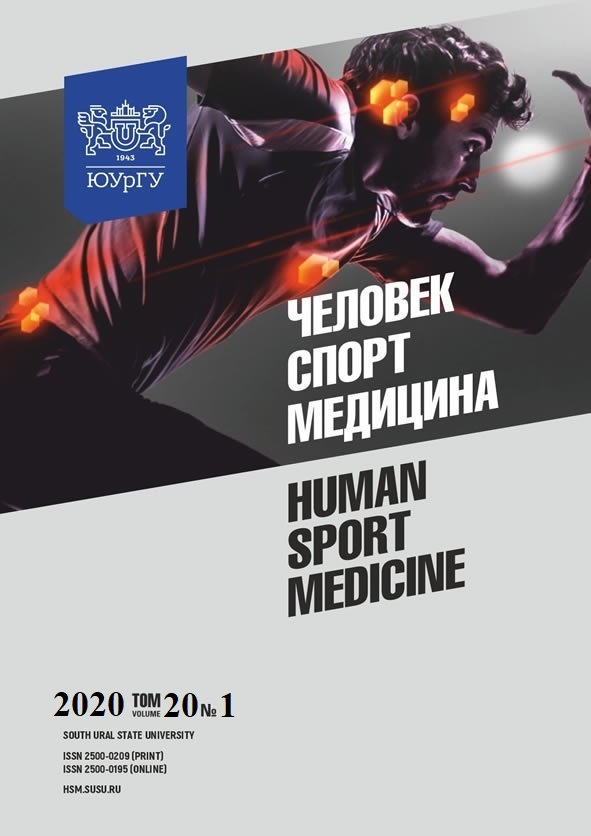PROTECTIVE MECHANISMS AGAINST HYPOXIA IN DIVING SIMULATION IN SWIMMERS
Abstract
Aim. The article deals with studying the systemic protective mechanisms of the brain against hypoxia during water immersion in highly skilled swimmers. Material and methods. 25 males aged 18–20 years were examined: 9 masters of sports, one master of sports of international class and 15 people not involved in sports. The study of cerebral blood flow was carried out by rheoencephalography (REG). REG was recorded at rest, when the face was immersed in water and during recovery. Examination was carried out 2 hours after the morning training session. In addition to cerebral blood flow, ECG and blood pressure were recorded at rest, during water immersion and recovery. Statistical data processing was performed using nonparametric Mann–Whitney and Wilcoxon criteria. Results. It was revealed that athletes at rest demonstrated more pronounced asymmetry of blood circulation and higher blood flow in the right hemisphere than people not involved in sports. However, during water immersion, the asymmetry disappears, blood flow improves, especially in the left hemisphere in the carotid artery territory as a result of a decrease in the tone of small vessels. In people not involved in sports, protective mechanisms are less pronounced. Conclusion. Vast experience in sports activities related to exercises performed in water and to training hypoxic exercises contributed to effective protective mechanisms against hypoxia based on the diving reflex.
References
References on translit
Copyright (c) 2020 Human. Sport. Medicine

This work is licensed under a Creative Commons Attribution-NonCommercial-NoDerivatives 4.0 International License.















